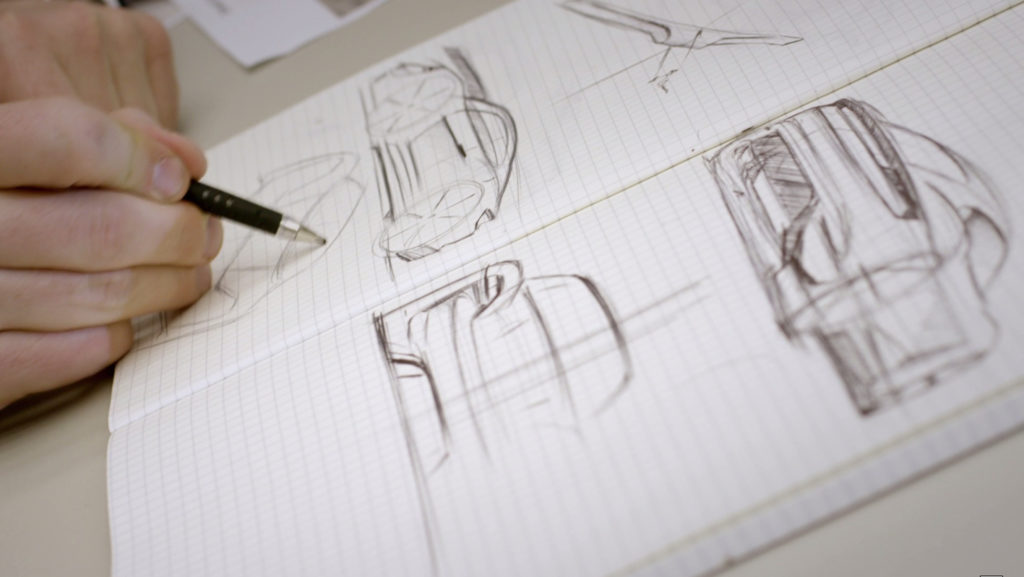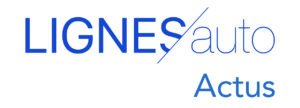
LIGNES/auto is also a Facebook page : https://www.facebook.com/lignesauto/?modal=admin_todo_tour
Interview conducted by the Porsche newsroom.
Arrangement : LIGNES/auto
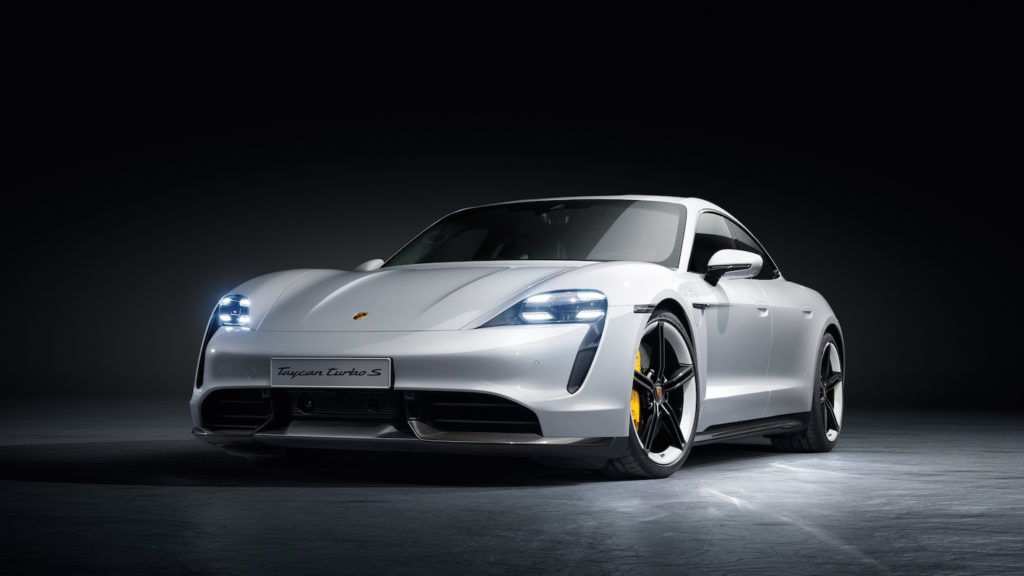
The Taycan is unlike any other before it. It is the dawn of a new era in many ways, including in terms of design ?
Michael Mauer: “It was indeed one of the most exciting and difficult tasks, simply because there was nothing to build on. But we didn’t start from scratch, because we knew that this new model had to be recognizable at first glance as a Porsche. It was to embody what I call brand identity. With the Taycan, we continue to pursue our strategy of offering the most sporty vehicle in each segment where we are represented. In terms of design, this is first expressed in proportions. Sports cars have a more spectacular width/height ratio than other vehicles. And I would even go so far as to say that we have redefined the architecture of purely electric vehicles to some extent. »
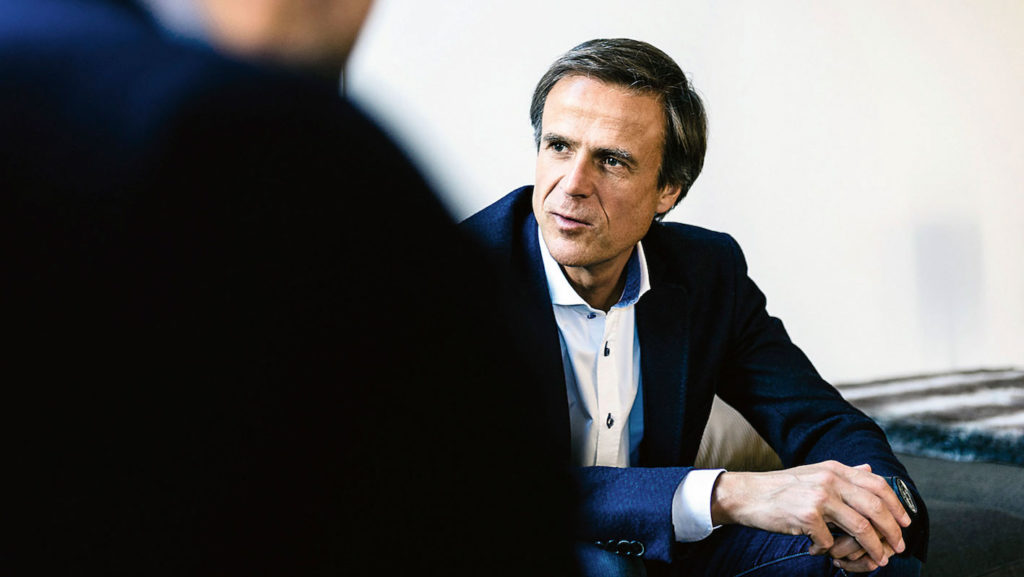
In what way ?
M.M. : “The Porsche Taycan is absolutely unique in its proportions. Usually, 100% electric vehicles are higher than conventional vehicles because the relatively heavy batteries are placed in the floor of the vehicle. We were not ready to accept it. However, you cannot install the batteries in another location – for reasons related only to driving dynamics – because the centre of gravity should be as low as possible. Because it is not possible to widen the vehicle, the specific challenge was to position the passengers as low as possible without them having to adopt an inclined position as in a Formula 1 car. We have solved this problem with what are called “walking cellars”. They allow a comfortable sitting position. In retrospect, we can say that this package, this architecture, was the biggest challenge. How high can the vehicle be ? How long and how wide should it be, how horizontally or vertically will passengers sit ? That’s what Porsche is like to me: this search for the ideal solution. »
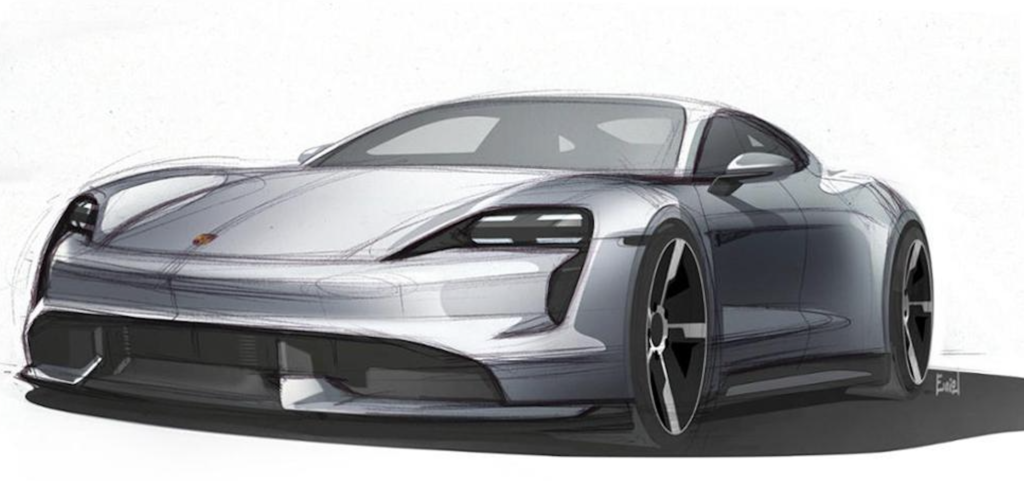
When were you involved in the development ?
M.M.: “Of course from the beginning. This is the most important prerequisite for a completely innovative design. In the past, the architectural package was often defined when we joined the project. Not here. Not here. I always like to explain our development process in style: it consists essentially of three steps. 1: the search for proportions, 2: style and 3: details. The proportions are fundamental. If they are not correct, there is not much you can really do with style and detail. »
From the beginning, was the direction of the project clear ?
M.M.: “We had many discussions, especially on the package and architecture. We even considered launching into e-mobility with… an SUV! But we finally decided to take this important step for Porsche with a sports car. The question was to what extent you are clearly indicating that we are at the dawn of a new, purely electrical era. Does that mean we have to change everything?
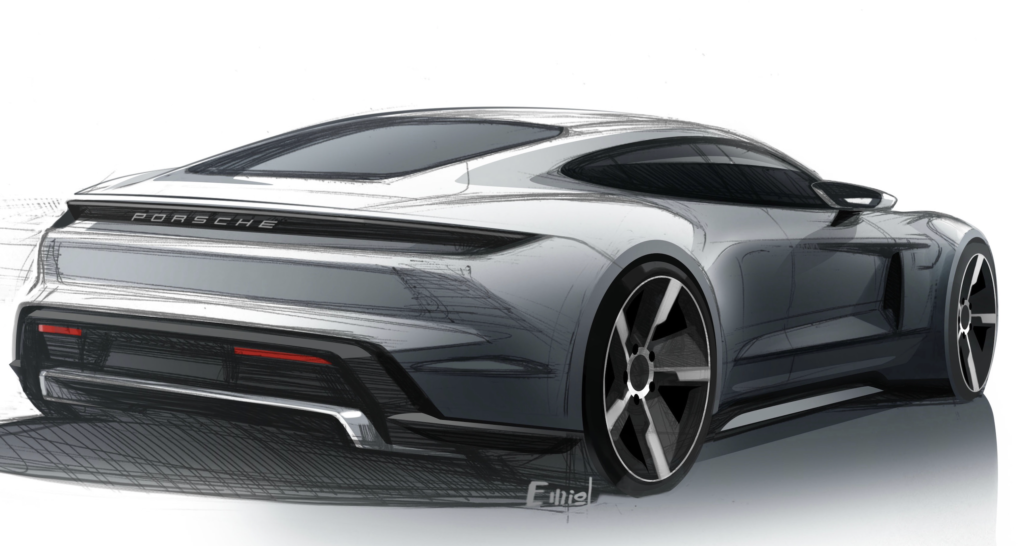
What is your opinion ?
M.M.: “With a brand as strong as Porsche, it would not be a good idea to ignore all the characteristic elements of the brand’s design. For me, there are always two fundamental elements: first, the brand identity – I recognize that it is a Porsche. Then there is the second level, the product identity – which Porsche is it ? The brand identity is manifested by different characteristics, starting with proportions. The special position of the hood and front fenders, the air intakes instead of a dominant grille, our flyline, the drooping roofline and a strong shoulder at the rear testify to this. These are the elements that characterize every Porsche. The differentiation is then made at the level of the product identity. »
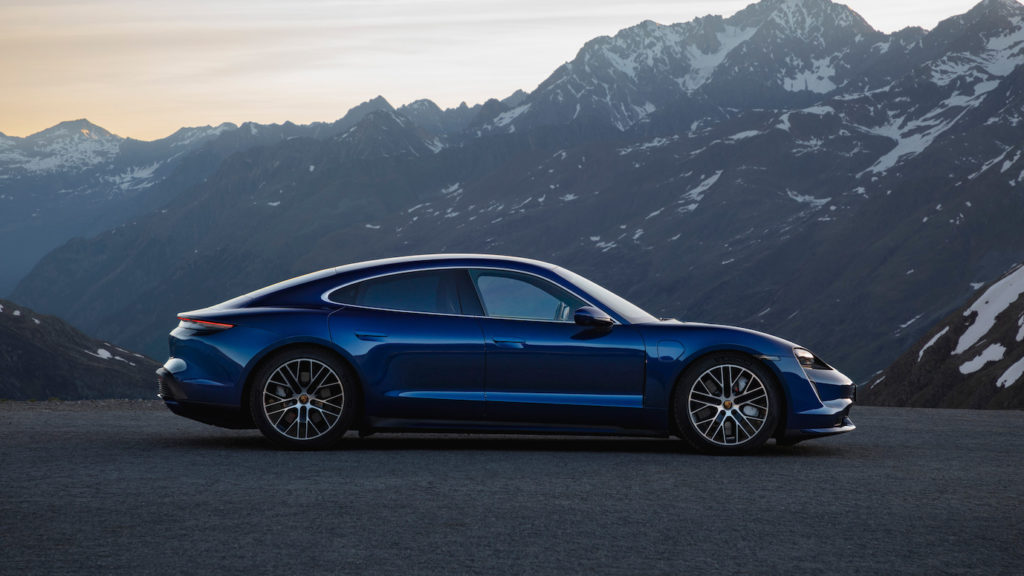
And to differentiate the product within the range ?
M.M.: “In terms of product identity, we give each series of models its individual characteristics. One of the crucial elements we have defined in this context is the shape of the optics. We have invested a lot of development time in this element and developed a concept that we are presenting for the very first time in a world premiere. Four-point daytime running lights, which are no longer so dominant today, are distinguished not only by their light configuration, but also by their shape. This sculptural design is important because it is the main element at the front. Modern lighting technology offers us fantastic possibilities in this context. »
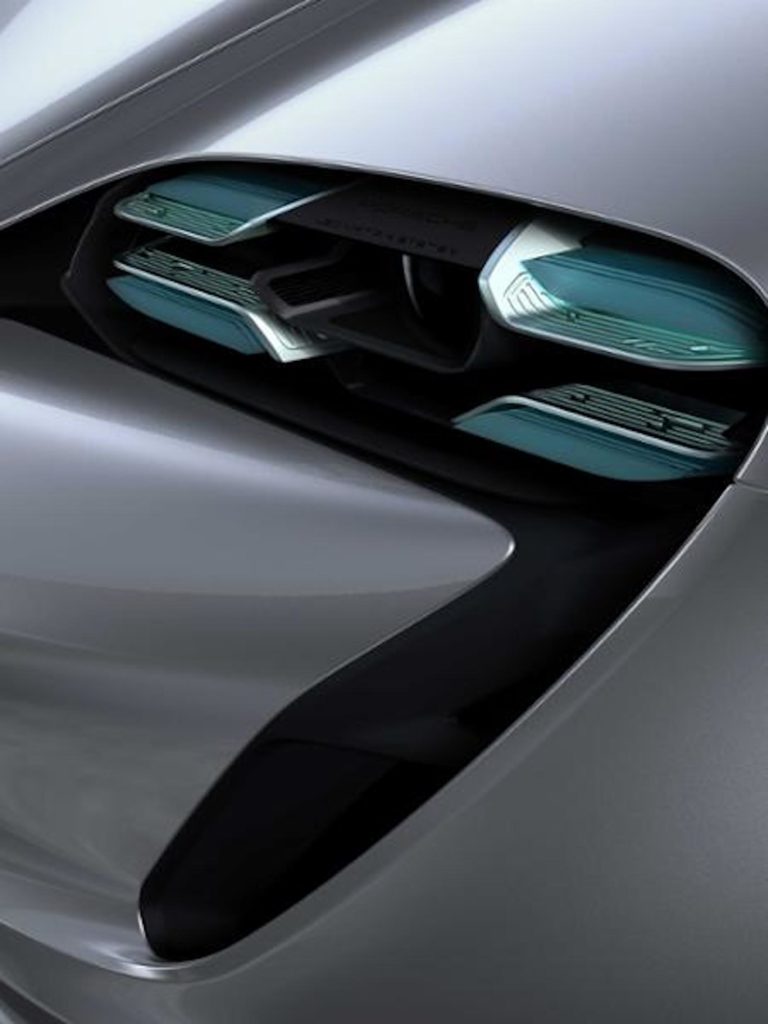
The fact that you don’t have to install a large internal combustion engine under the hood is probably also an advantage?
M.M.: “The result is greater freedom for the Taycan, while the style challenge is completely different for the Panamera or the Cayenne. Here, we can rely more on the design of the 911, which is very useful for the brand identity. But we go even further in terms of product identity: aerodynamics and air flow quality are particularly important for 100% electric models. For this reason, we have removed the traditional headlights and used a light source located in the air intake. Air enters laterally from the front and exits behind the wheel arches. The air flow at the wheels is therefore quieter, which provides significant aerodynamic advantages. »
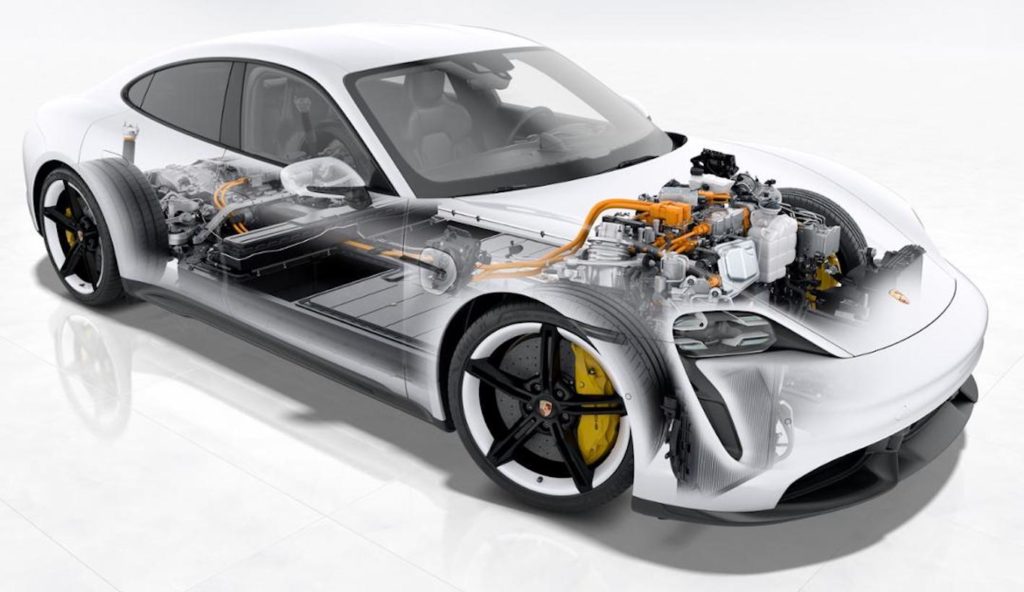
Have you been able to copy the features of the Panamera, below? After all, it is also a four-door sports vehicle.
M.M. : “It goes without saying that we have benefited from the experience acquired with the different generations of Panamera. From the side view, I think the downward inclination of the roof line and the appearance of the side windows are particularly successful design elements. However, as there is always the objective of giving the model an individual product identity, it was clear that the Taycan should not look like a small Panamera. The differences are so great that there is no risk of confusing the two. »
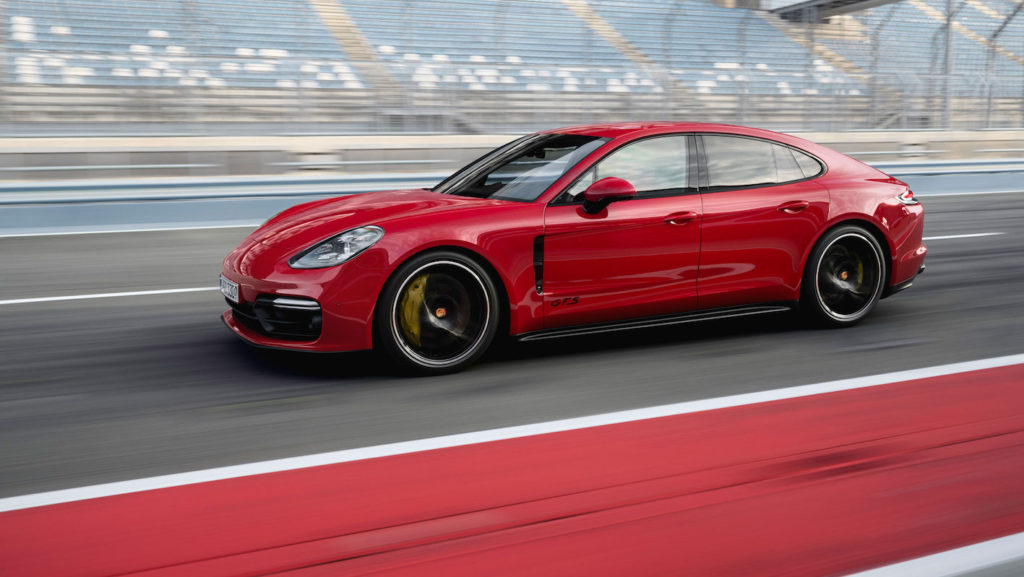
This brings you back to the challenge of reconciling the identity objectives of the model and the differentiation between them.
M.M.: “You have exactly that effect when you look at the back of the Porsche Taycan. On the one hand, you recognize the brand’s identity with a strong shoulder, beautiful proportions and surfaces as clean as possible. So we focused on aerodynamics and focused intensively on the rear diffuser, which in turn represents the identity of purely electric vehicles. The luminous signature on the back reflects our philosophy, where we introduce new elements through the product identity, which then have the possibility to be part of the brand identity. Originally, only 911 all-wheel drive models were equipped with a light bar, and now all Porsche models are equipped with one. »

Have you also discussed the redesign of the logo with the introduction of Taycan ?
M.M.: “It is well known that we have developed the logo several times over the years. Just as we recently updated the logo of the new generation of 911 when it was launched. I would say that the lettering has become a little more irregular, and we will adopt it for Taycan. We have already experimented with the black and white badges as a high-quality aluminium engraving on the covers. This creates a more contemporary impression, but breaks with tradition. In the end, we opted to keep the current crest. »
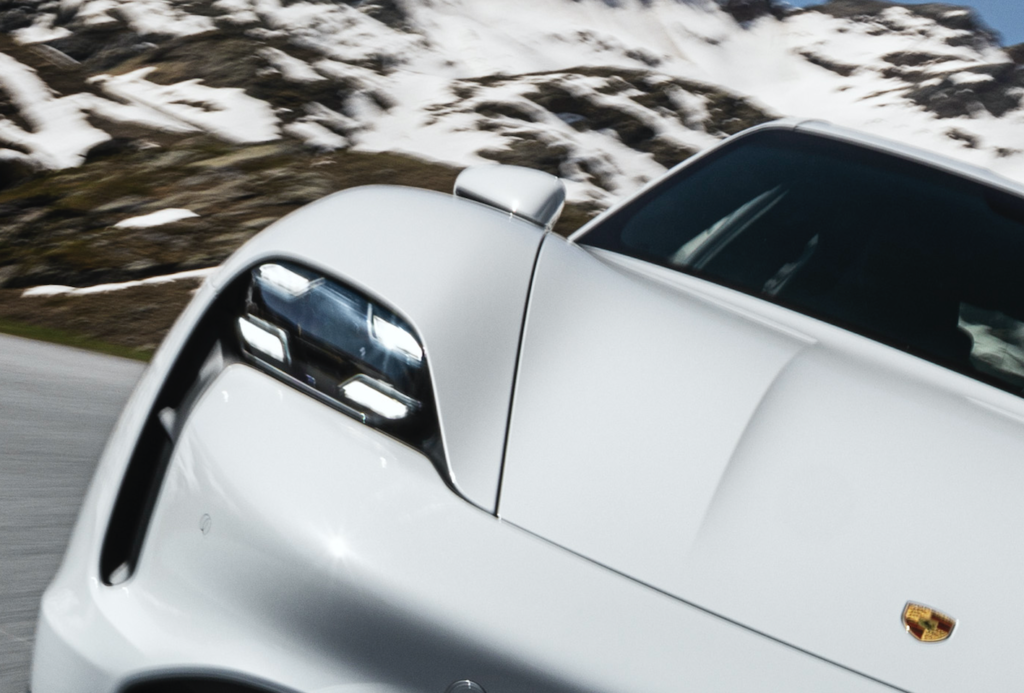
Speaking of tradition, how does design work change as a result of digitization? Do you still need traditional tools ?
M.M. : “Let me put it this way: creativity is always essential and we draw it from the minds of designers, not from the minds of digital pens or digital milling machines. However, we have become much faster because we can work simultaneously in the physical and digital worlds. Today, we can create models from simple sketches and immediately reproduce them as 3D graphics on computers or large video screens. It is very attractive and speeds up processes, but I remain firmly convinced that it does not replace the development of a physical model. There are things you just can’t see on a computer. Sometimes, it is necessary to design a surface on the basis of mathematically “incorrect” parameters to ensure that it will have the right effect later. In some cases, you won’t even be able to give the reason – you just have a feeling. For this reason, we still rely on Clay models up to scale 1 where each surface and each line is created by hand.
It goes without saying that it is also a cost factor. For me, one of the biggest challenges is to remember that I do not design the vehicle for myself, but for my customers. They rightly expect an exclusive product that also demonstrates quality know-how. The surfaces are charged with an engaging, convex, concave tension, and everything is fluid as a whole. They are also signs of quality. »
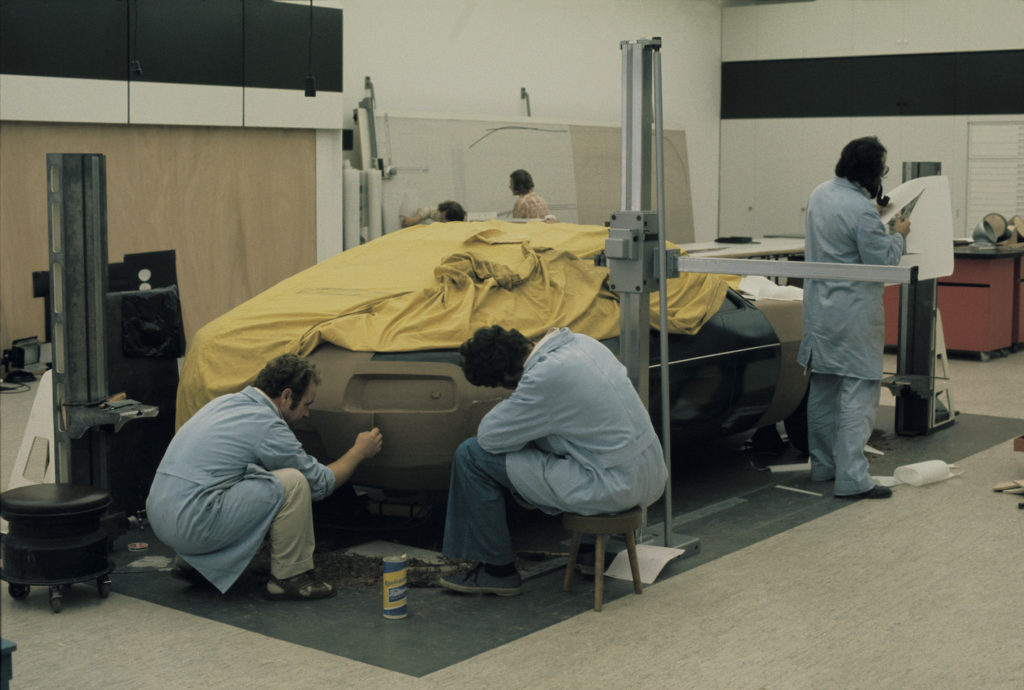
And this future will now also be entirely electric at Porsche, at least to a certain extent. Isn’t it also an exciting time for you personally?
M.M.: “Definitely yes! I started at Porsche when the development of the Panamera led to a massive expansion of the product range. Once again, we are at a crucial stage for the company. It is something very special to take responsibility in these times of change. My vision is that the Taycan will become the icon of this new era, almost like a synonym for a purely electric sports car. Just like what the 911 has achieved in its segment over the past decades.
Find our previous “posts” on the theme “Special Taycan”:
- the 10 Porsche bosses: http://lignesauto.fr/?p=12577
- Ferdinand Porsche’s first notebook comes out of the archives: http://lignesauto.fr/?p=12506
- Taycan on the Nürburgring circuit: http://lignesauto.fr/?p=12627
- the portrait of Ferdinand Porsche: http://lignesauto.fr/?p=12490
- the first 100% electric Porsche wasn’t the Taycan: http://lignesauto.fr/?p=12533

